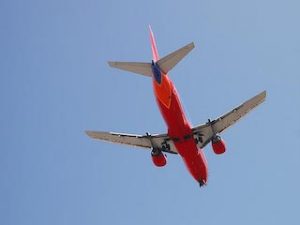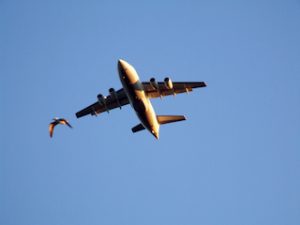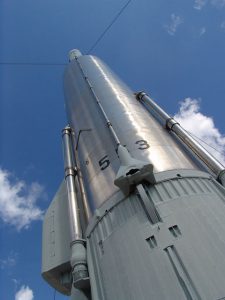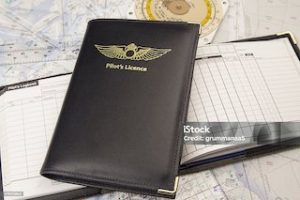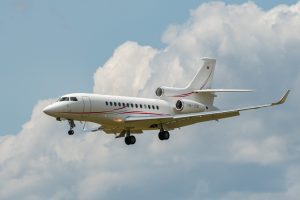Understanding Aeronautical Engineering In Modern Aviation
 Aeronautical engineering is the field of study and practice that focuses on the design, development, testing, and production of aircraft. It is a highly specialized branch of engineering that combines principles from various disciplines, including mechanical engineering, materials science, fluid dynamics, and aerodynamics, to create aircraft capable of flight. The term aeronautical itself is derived from the Greek words aero, meaning air, and nautical, meaning navigation, thus reflecting the core purpose of this field: the art and science of air navigation.
Aeronautical engineering is the field of study and practice that focuses on the design, development, testing, and production of aircraft. It is a highly specialized branch of engineering that combines principles from various disciplines, including mechanical engineering, materials science, fluid dynamics, and aerodynamics, to create aircraft capable of flight. The term aeronautical itself is derived from the Greek words aero, meaning air, and nautical, meaning navigation, thus reflecting the core purpose of this field: the art and science of air navigation.
Aeronautical engineering plays a vital role in the aviation industry, directly influencing the performance, safety, and sustainability of aircraft. The evolution of aeronautical engineering has had a transformative effect on human society, enabling faster global transportation and creating a dynamic industry that connects people and economies across continents.
History of aeronautical engineering
The history of aeronautical engineering is marked by the relentless pursuit of powered flight. While humans have always been fascinated by the possibility of flight, the true scientific study of aeronautics began in the 18th and 19th centuries. Early pioneers such as Sir George Cayley and the Wright brothers laid the foundations for modern aeronautical engineering.
Cayley, known as the father of aviation, was the 1st to understand the key aerodynamic forces at play, which is lift, drag, and thrust. His work paved the way for the Wright brothers, who, in 1903, successfully designed and flew the world’s 1st powered aircraft, the Wright Flyer. This historic flight marked the dawn of powered aviation, and with it, the birth of aeronautical engineering as a formal discipline.
The early 20th century saw rapid advances in aeronautical engineering, spurred by World War I and II, as nations invested heavily in aircraft technology for both military and civilian applications. During this period, engineers developed new aircraft designs, more powerful engines, and advanced materials that drastically improved performance and safety.
Core disciplines in aeronautical engineering
Aeronautical engineering is a multidisciplinary field, incorporating various areas of expertise. The core disciplines include:
- Aerodynamics: Aerodynamics focuses on how air flows around an aircraft and the forces generated by this interaction. Understanding aerodynamics is crucial for designing efficient and stable aircraft. Engineers analyse airflow patterns, pressure distributions, and turbulence to optimise lift and minimise drag, allowing aircraft to fly smoothly and efficiently.
- Propulsion systems: Propulsion is the science of generating the necessary thrust to move an aircraft forward. In aeronautical engineering, propulsion systems include jet engines, turbojets, turbofans, and propellers. These systems convert fuel into mechanical energy, propelling the aircraft through the air. The development of high-efficiency propulsion systems is key to improving fuel economy and reducing the environmental impact of aviation.
- Structures and materials: The structural design of an aircraft must ensure that it can withstand the stresses of flight, including changes in pressure, temperature, and mechanical loads. Engineers in this area work on the development of lightweight and durable materials such as aluminum alloys, carbon composites, and titanium. Advances in materials science have allowed for stronger, lighter aircraft, contributing to improved fuel efficiency and longer operational lifespans.
- Flight mechanics and stability: This discipline focuses on the dynamics of how an aircraft moves in the air and maintains stability. Flight mechanics involve understanding and controlling the behavior of an aircraft in various flight conditions, such as during takeoff, cruising, or landing. Engineers design control surfaces, such as ailerons, rudders, and elevators, to ensure that an aircraft remains stable and can maneuver effectively.
- Avionics and flight control systems: Avionics is the integration of electronic systems within an aircraft to manage communications, navigation, and control. Modern aircraft are equipped with sophisticated avionics systems that help pilots manage flight paths, monitor engine performance, and navigate complex airspace. Flight control systems, which often use fly-by-wire technology, ensure that aircraft respond smoothly and accurately to pilot inputs.
- Fluid mechanics and thermodynamics: Understanding the behavior of fluids, particularly air, is essential for aeronautical engineers. Fluid mechanics and thermodynamics come into play when designing engines, wings, and fuselage components to ensure optimal efficiency. Engineers analyse how fluids move and transfer energy to improve engine performance and minimise energy losses during flight.
Importance of aeronautical engineering in modern aviation
The significance of aeronautical engineering in modern aviation cannot be overstated. Every aspect of an aircraft’s design, from its structure to its propulsion system, is influenced by aeronautical engineering principles. As the global aviation industry continues to grow, the demand for more efficient, safer, and environmentally sustainable aircraft becomes increasingly urgent.
The most notable trend in modern aeronautical engineering is the push for greener aviation. Aircraft emissions contribute to global greenhouse gas levels, and the aviation industry is under pressure to reduce its environmental footprint. Aeronautical engineers are at the forefront of efforts to develop more fuel-efficient engines, lighter materials, and innovative aircraft designs that minimize drag and reduce fuel consumption.
In recent years, electric propulsion and hybrid-electric aircraft have emerged as promising solutions to the challenge of reducing emissions. Aeronautical engineers are working to develop battery technology and lightweight materials that can make electric flight viable for both short- and long-haul journeys. These advancements could revolutionise the aviation industry, reducing its dependence on fossil fuels and contributing to global sustainability goals.
Aeronautical engineering and aircraft safety
Safety is the paramount concern in aviation, and aeronautical engineers play a crucial role in ensuring that aircraft are safe to fly. Every aircraft design undergoes rigorous testing and certification processes to ensure it meets stringent safety standards. Engineers conduct stress tests on materials and structures, simulate flight conditions, and analyze failure scenarios to identify and mitigate potential risks.
In addition to designing safe aircraft, aeronautical engineers contribute to the development of advanced safety systems. These include collision avoidance systems, automated landing systems, and real-time monitoring of aircraft performance. The integration of cutting-edge technology, such as artificial intelligence and machine learning, into avionics systems is enhancing the ability of pilots to respond to emergencies and improving overall flight safety.
The use of simulators in pilot training is another area where aeronautical engineering contributes to aviation safety. Simulators allow pilots to practice responding to a wide range of scenarios, from normal flight operations to emergency situations, in a controlled environment. Aeronautical engineers work closely with flight schools to develop highly realistic simulation environments that replicate real-world conditions, helping pilots gain the experience they need to operate aircraft safely.
Future trends in aeronautical engineering
The future of aeronautical engineering is filled with exciting possibilities as new technologies and innovations continue to reshape the aviation landscape. Several key trends are expected to define the future of this field:
- Autonomous aircraft: Advances in artificial intelligence and robotics are paving the way for autonomous or unmanned aircraft. While drones have already become common for certain applications, fully autonomous passenger aircraft are still in development. Aeronautical engineers are working to create systems that can safely operate without human pilots, which could revolutionise both commercial and military aviation.
- Supersonic and hypersonic flight: After the retirement of the Concorde, supersonic passenger flight became a thing of the past. However, renewed interest in supersonic and even hypersonic travel has led to the development of new aircraft designs capable of flying faster than the speed of sound. Aeronautical engineers face the challenge of creating these aircraft while addressing concerns such as noise pollution, fuel efficiency, and environmental impact.
- Advanced materials and manufacturing techniques: New materials and manufacturing processes, such as 3D printing, are revolutionising how aircraft are built. Aeronautical engineers are exploring how to use these materials to create stronger, lighter, and more efficient aircraft components. For example, 3D-printed parts can be custom-designed for optimal performance, reducing weight and improving fuel efficiency.
- Sustainable aviation: The pressure to reduce aviation’s environmental impact will continue to drive innovation in aeronautical engineering. Engineers will be tasked with developing more efficient aircraft that use less fuel, produce fewer emissions, and incorporate sustainable materials. The rise of electric and hybrid-electric propulsion systems is just the beginning, with more sustainable solutions expected to emerge in the coming decades.
- Urban air mobility: Urban air mobility, including air taxis and personal aerial vehicles, is a growing area of interest. Aeronautical engineers are working on designing aircraft that can operate in urban environments, offering a new mode of transportation for congested cities. These aircraft will need to be highly efficient, quiet, and capable of vertical takeoff and landing, which presents unique engineering challenges.
Conclusion
Aeronautical engineering is a dynamic and essential field that underpins the entire aviation industry. From the earliest days of flight to the cutting-edge technologies of today, aeronautical engineers have driven innovation in aircraft design, propulsion systems, and safety. As the industry continues to evolve, with increasing focus on sustainability, safety, and efficiency, aeronautical engineers will remain at the forefront of these advancements.
Incorporating key elements such as aerodynamics, propulsion, structures, and avionics, aeronautical engineering ensures that aircraft are not only capable of flight but also efficient and safe. The future of aviation promises to bring even more exciting developments, with autonomous aircraft, sustainable aviation solutions, and supersonic travel just on the horizon. Through the efforts of aeronautical engineers, the world will continue to shrink as air travel becomes faster, safer, and more accessible than ever before.




